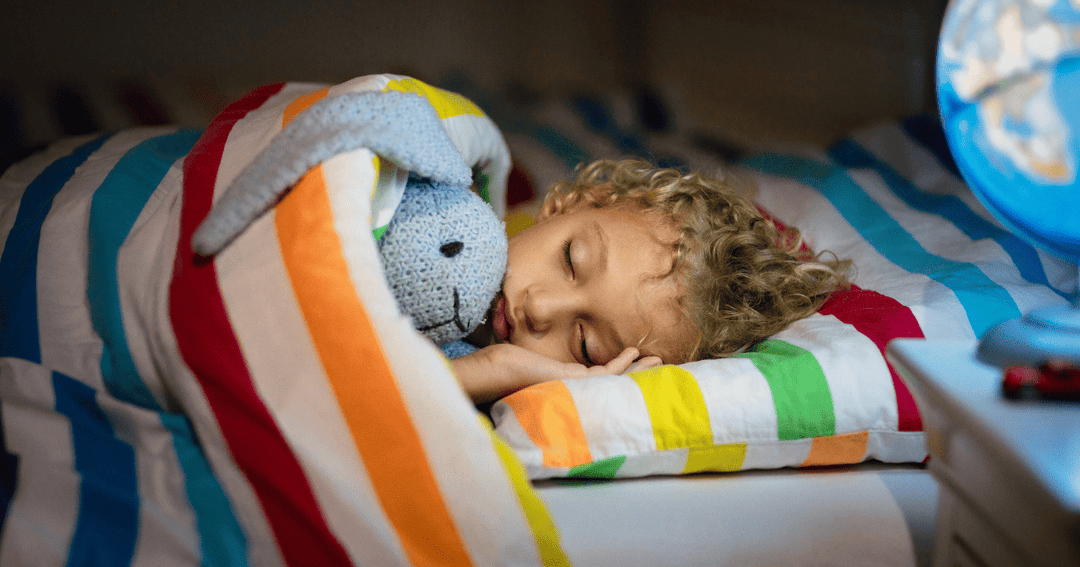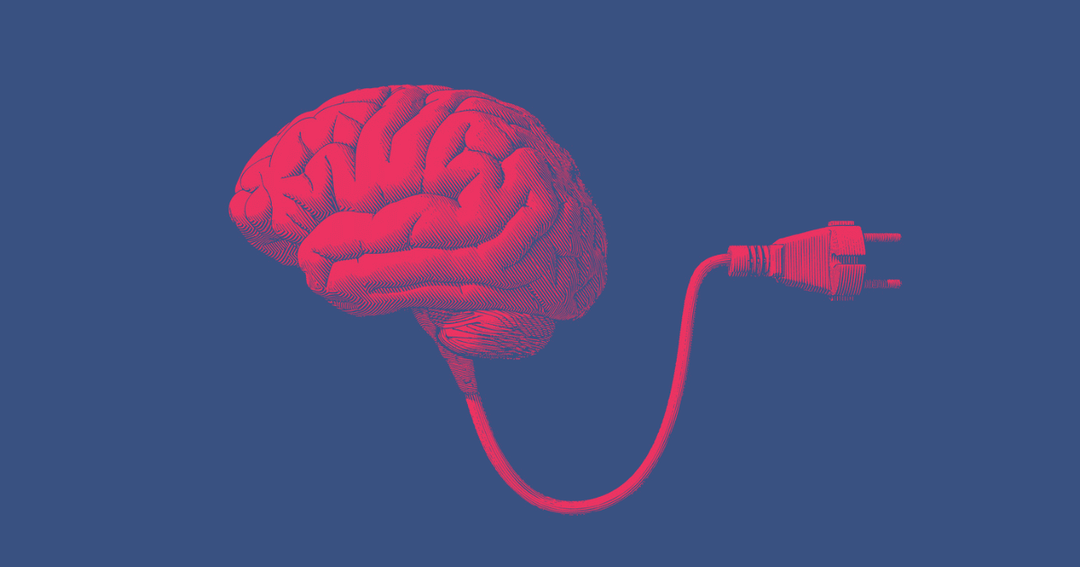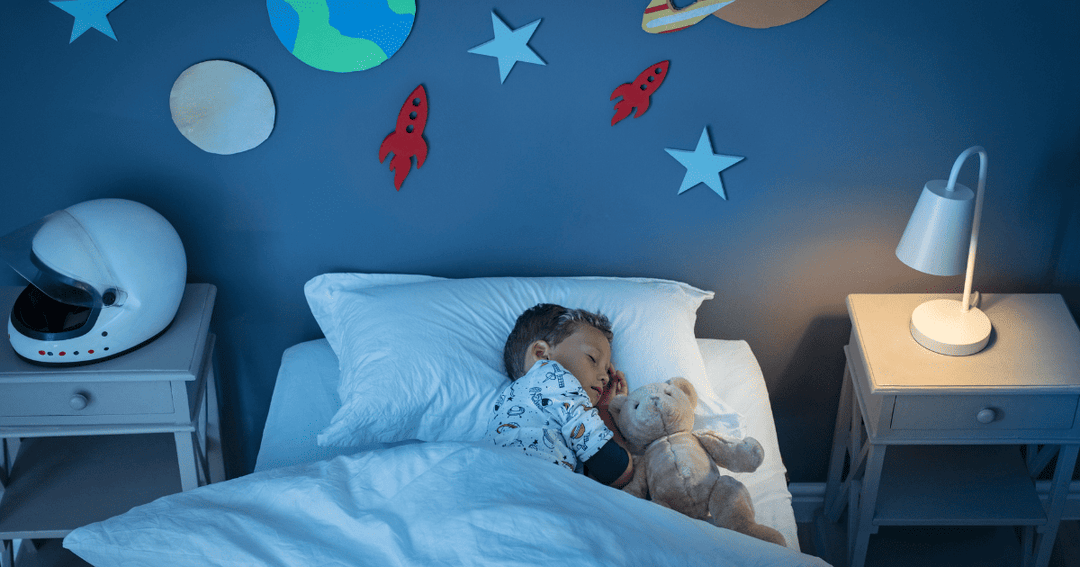Autism and Sleep: How to Help Your Child Sleep Better
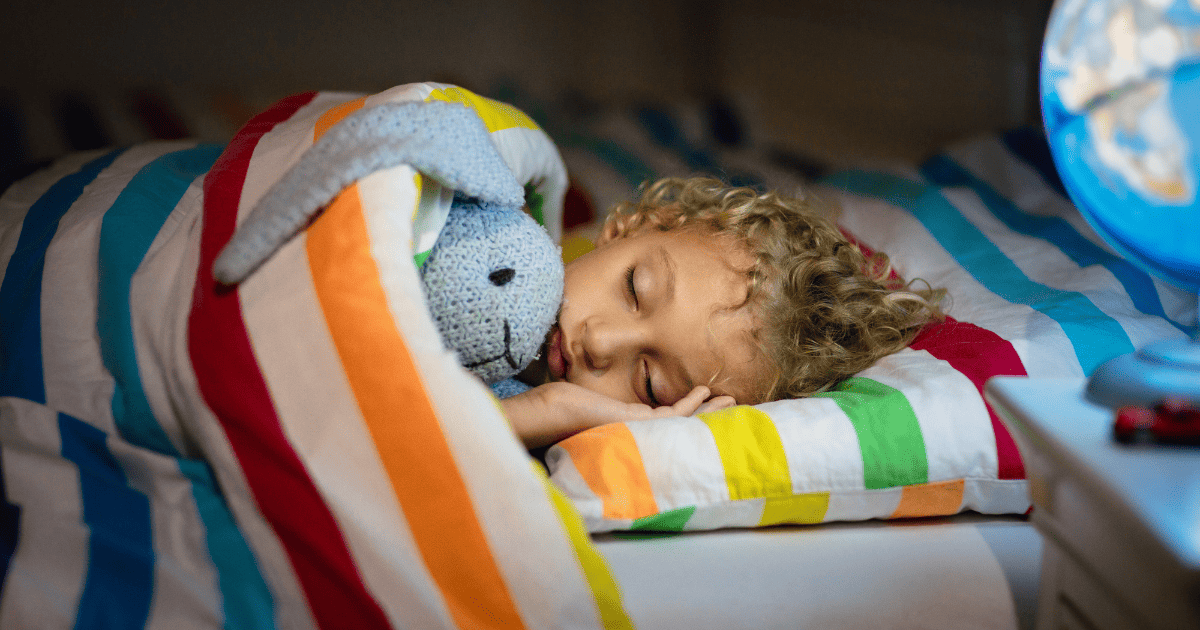
Sleep problems affect most families raising a child with autism. If bedtime has become a nightly struggle or if your child wakes frequently throughout the night, this guide can help.
We'll explore why sleep is particularly difficult for children on the autism spectrum and walk you through practical tips that have helped other families find relief.
How common are sleep problems in children with autism?
Research consistently shows that children with autism experience sleep difficulties at much higher rates than their peers. Studies estimate that between 50% and 80% of children with autism spectrum disorder (ASD) have ongoing sleep issues, compared to 20% to 30% of typically developing children [1].
These statistics reflect what many parents already know from experience. Sleep problems in autism rarely resolve on their own and frequently persist throughout adolescence and into adulthood. Nearly 80% of adults with autism report ongoing sleep disturbances, suggesting that without intervention, these challenges often become lifelong [2].
Autism affects approximately 1 in 31 children (3.2%) in the United States, with significant variation across gender and ethnic groups [3]. Boys receive diagnoses at nearly four times the rate of girls [4]. Recent data show higher autism identification rates among Black, Hispanic, Asian/Pacific Islander, and American Indian/Alaska Native children compared to White children, reflecting improved screening and awareness in diverse communities [3].
|
Group |
Prevalence |
|
Boys |
4.9% |
|
Girls |
1.4% |
|
White children |
2.8% |
|
Black children |
3.7% |
|
Hispanic children |
3.3% |
|
Asian/Pacific Islander children |
3.8% |
|
American Indian/Alaska Native children |
3.8% |
Sleep disturbances rank as one of the most common co-occurring conditions in autism, affecting families across all demographic groups.
The wide range in prevalence numbers (40% to 80%) reflects how differently autism presents in each child. Some experience mild sleep disruptions while others face severe, persistent challenges that may be classified as insomnia in autism [2].
Why is sleep so challenging for children with autism?
Sleep difficulties in autism result from several interconnected factors. Understanding these can help you identify which issues affect your child most significantly.
Biological and neurological differences
Children with autism often have differences in their circadian rhythm, the internal biological clock that regulates the sleep-wake cycle. Their bodies may produce melatonin (a hormone that promotes sleepiness) on a different schedule or in different amounts than typical children [2].
Research has identified variations in genes related to circadian rhythm regulation in some individuals with autism [2]. This can mean their bodies simply don't recognize typical sleep cues the same way. Some children with autism are natural "night owls" who don't feel sleepy until very late, while others wake up extremely early regardless of when they fell asleep.
Sensory processing challenges
Many children with autism have hyper- or hypo-reactivity to environmental stimuli, meaning they may be overly sensitive or under-responsive to sensory input [2]. At bedtime, this can become particularly problematic:
-
Background noises that others filter out may seem loud and distracting
-
Room temperature variations can feel uncomfortable
-
Bedding textures or pajama seams may cause distress
-
Ambient light from hallways or electronics can interfere with sleep onset
These sensitivities can make it difficult to relax and transition into sleep, even when your child feels tired.
Co-occurring medical conditions
Many children with autism have additional health conditions that directly impact sleep quality [2]:
-
ADHD: Makes it harder to settle down and stay asleep
-
Anxiety disorders: Can cause racing thoughts at bedtime
-
Gastrointestinal problems: Discomfort disrupts sleep throughout the night
-
Epilepsy: Seizure activity affects sleep architecture
-
Sleep-disordered breathing: Including sleep apnea
-
Iron deficiency and restless legs syndrome: Can cause uncomfortable sensations that make falling asleep difficult
If you suspect any of these sleep disorders, discussing them with your child's doctor becomes essential for addressing sleep problems effectively.
Behavioral patterns and routines
Children with autism often have strong preferences for specific routines and rituals. While structure can help with sleep, rigid patterns can also create problems when circumstances change. Difficulty with transitions makes the shift from wakefulness to sleep particularly challenging.
Also Read: Sleep and Children: Everything Parents Need to Know
What sleep problems are most common?
Children with autism may experience one or several of these issues:
Difficulty falling asleep
Many children need 30 to 40 minutes or more to fall asleep, compared to 15 to 20 minutes for typical children.
Frequent night wakings
Waking up multiple times during the night and having trouble returning to sleep disrupts the sleep cycle and prevents restorative deep sleep.
Early morning wakings
Some children wake very early (4 a.m. or 5 a.m.) and cannot fall back asleep.
Bedtime resistance
Refusing to go to bed, insisting on specific rituals, or becoming distressed during the bedtime routine.
Irregular sleep schedules
Sleep and wake times vary significantly from day to day, making it hard to establish consistent patterns.
Sleep disruptions
These include night terrors, sleepwalking, teeth grinding, or bedwetting that occur more frequently than in other children.
These patterns often overlap and can vary over time.
How does poor sleep affect daily life?
Sleep deprivation affects multiple aspects of your child's daily functioning. Children who consistently get insufficient or fragmented sleep often show increased difficulty with:
-
Focus and attention during school activities
-
Managing emotions and responding to frustration
-
Social interactions and reading social cues
-
Repetitive behaviors and sensory sensitivities
Research shows that sleep quality is closely linked to the severity of core autism symptoms, meaning that poor sleep often corresponds with increased challenges in other areas [1] [2].
Parents and caregivers also experience significant effects. Studies document higher stress levels, increased anxiety, and physical exhaustion among parents dealing with chronic sleep deprivation [2]. Family routines become harder to maintain, and the quality of life for everyone in the household can decline.
Research indicates that improvements in sleep often lead to measurable positive changes in daytime behavior, learning capacity, and family daily functioning.
Also Read: Delayed School Start Times May Help with Teenage Depression
How much sleep does a child with autism need?
Sleep needs vary by age, but children with autism require the same amount of sleep as their neurotypical peers [5]:
|
Age Group |
Recommended Sleep (24 hours) |
|
3-5 years |
10-13 hours |
|
6-12 years |
9-12 hours |
|
13-18 years |
8-10 hours |
Studies show that children with autism average about 30 minutes less sleep per night than recommended [6]. While this may not sound significant, chronic sleep debt accumulates and affects daily functioning.
What the research shows [7]:
|
Sleep Measure |
Children with Autism |
Typical Children |
|
Time to fall asleep |
40 minutes |
17 minutes |
|
Time awake during the night |
49 minutes |
28 minutes |
|
Total sleep per night |
7.9 hours |
8.4 hours |
|
Sleep efficiency* |
86% |
92% |
*Sleep efficiency refers to the percentage of time in bed actually spent sleeping.
Beyond these measurements, research also shows differences in sleep architecture, including altered REM sleep patterns that affect overall sleep quality [2].
How to help your autistic child sleep better
Several science-based autism sleep solutions can help improve sleep quality. These work best when implemented consistently over several weeks.
Create a sensory-friendly sleep environment
Temperature and lighting
Keep the bedroom cool, between 65-68°F. Use blackout curtains to eliminate external light. Cover or remove electronic device lights.
Sound management
Some children sleep better with complete quiet, while others benefit from white/pink noise or gentle nature sounds. Experiment to find what works for your child.
Comfortable bedding
Choose soft, breathable fabrics. Remove tags and avoid rough seams. Some children benefit from weighted blankets, though these should only be used with appropriate weight limits and supervision.
Establish consistent sleep routines
Children with autism often thrive with predictable patterns. A successful autism bedtime routine typically:
-
Starts at the same time each evening
-
Follows the same sequence of activities
-
Takes 30-45 minutes from start to finish
-
Includes calming, quiet activities
Sample routine:
-
Bath or face washing (20 minutes before bed)
-
Pajamas and teeth brushing
-
Reading or quiet music
-
Brief cuddle or back rub
-
Lights out
Visual schedules with pictures or icons can help children understand and follow the routine independently.
Manage light exposure
Light strongly influences the circadian rhythm. To support healthy sleep-wake cycles:
-
Expose your child to sunlight in the morning
-
Dim lights in the evening, starting 1-2 hours before bedtime
-
Eliminate screen time (tablets, phones, TV) at least one hour before bed
-
Use dim, warm-colored nightlights if complete darkness causes anxiety
Consider the timing of meals and activities
Food and drink
Avoid caffeine entirely (including chocolate and some sodas). Serve dinner 2-3 hours before bedtime. A small, protein-rich snack before bed may help some children, but avoid large meals.
Physical activity
Regular exercise supports better sleep, but intense physical activity should end at least 3 hours before bedtime.
Use positive sleep associations
Help your child associate their bed with sleep rather than play or screen time. The bedroom should be used primarily for sleeping, not as a playroom or space for stimulating activities.
When should I talk to a doctor?
Consult your child's healthcare provider if:
-
Sleep problems persist after 4-6 weeks of consistent routine changes
-
Your child snores loudly, gasps, or appears to stop breathing during sleep
-
Daytime sleepiness interferes with safety or learning
-
You suspect an underlying medical condition
-
Sleep problems severely impact daily functioning
A pediatric sleep specialist or sleep consultant can conduct a thorough evaluation and may recommend:
-
Sleep studies to assess sleep architecture and identify disorders
-
Behavioral sleep interventions with a trained therapist
-
Treatment for co-occurring conditions affecting sleep
-
In some cases, medication options
Keep a sleep diary for 1-2 weeks before your appointment. Record bedtimes, wake times, night wakings, naps, and notable events. This information helps doctors identify patterns and develop targeted interventions.
What about natural sleep aids for children with autism?
While melatonin supplements are often the go-to sleep aid for many parents, they come with concerns worth considering. Research has found that melatonin products can contain amounts varying from 83% less to 478% more than what's listed on the label. Side effects may include morning grogginess, daytime drowsiness, headaches, or increased bedwetting, and the long-term effects on developing children remain unclear.
If you're looking for a natural alternative, products like Sip2Sleep® for Children offer a different approach. It combines Montmorency tart cherry extract, which contains naturally occurring melatonin and has anti-inflammatory properties that may help reduce physical discomfort interfering with sleep, with Rafuma leaf extract, an herb used for centuries to promote relaxation and calm the mind. The liquid format makes administration easier for children who struggle with pills or gummies.
Whatever supplement you're considering, discuss it with your child's healthcare provider first, especially if your child takes other medications. Supplements work best alongside good sleep hygiene and a sleep-friendly environment, not as a replacement for these foundational strategies.
Also Read: Is Melatonin Safe for Kids? What Parents Need to Know
What To Remember
Sleep problems in children with autism can feel overwhelming, but most families see improvement with consistent effort and appropriate support. Start with one or two changes rather than trying to implement everything at once.
If you've tried behavioral strategies consistently for several weeks without improvement, don't hesitate to seek additional professional support. Sleep specialists, behavioral therapists, and pediatricians can provide targeted interventions tailored to your child's specific needs.
Better sleep benefits everyone in your family. With patience, consistency, and appropriate support, most children with autism can develop healthier sleep habits.
NOTE: This article is for educational purposes only and does not substitute for medical advice. Always consult your healthcare provider for recommendations specific to your child’s needs.
TRY Sip2Sleep® Childrens Today!
Frequently Asked Questions
How can I help my autistic child sleep better?
Start with consistent bedtime routines, a sensory-friendly sleep environment, and appropriate light exposure throughout the day. Most children benefit from predictable patterns and reduced sensory stimulation before bed.
Why won't my autistic child sleep through the night?
Multiple factors contribute, including differences in circadian rhythm, sensory sensitivities, anxiety, and co-occurring conditions like ADHD or gastrointestinal issues. Many children with autism have irregular melatonin production that affects their natural sleep-wake cycle.
Is melatonin safe for children with autism?
Melatonin supplements can help some children, but they come with concerns about dosing inconsistencies and potential side effects. Always consult your child's doctor before starting any supplement, including melatonin.
What is the best bedtime routine for a child with autism?
The most effective routines start at the same time each evening, follow a predictable sequence, include calming activities, and end in the bedroom. Visual schedules help many children understand and follow the routine independently.
Do weighted blankets help autistic children sleep?
Some children find weighted blankets calming and sleep better with them. However, they must be used with appropriate weight limits (typically 10% of body weight) and supervision to ensure safety.
Can sleep problems in autism be improved?
Yes, most children show significant improvement with consistent behavioral strategies, environmental modifications, and appropriate support. While some challenges may persist, sleep habits typically improve with the right interventions.
Reference:
-
Xavier SD. The relationship between autism spectrum disorder and sleep. Sleep Sci. 2021 Jul-Sep;14(3):193-195. doi: 10.5935/1984-0063.20210050. PMID: 35186195; PMCID: PMC8848524.
-
Estes A, Hillman A, Chen ML. Sleep and Autism: Current Research, Clinical Assessment, and Treatment Strategies. Focus (Am Psychiatr Publ). 2024 Apr;22(2):162-169. doi: 10.1176/appi.focus.20230028. Epub 2024 Apr 10. PMID: 38680972; PMCID: PMC11046719.
-
Shaw KA, Williams S, Patrick ME, et al. Prevalence and Early Identification of Autism Spectrum Disorder Among Children Aged 4 and 8 Years — Autism and Developmental Disabilities Monitoring Network, 16 Sites, United States, 2022. MMWR Surveill Summ 2025;74(No. SS-2):1–22. DOI: http://dx.doi.org/10.15585/mmwr.ss7402a1
-
Maenner MJ, Warren Z, Williams AR, et al. Prevalence and Characteristics of Autism Spectrum Disorder Among Children Aged 8 Years — Autism and Developmental Disabilities Monitoring Network, 11 Sites, United States, 2020. MMWR Surveill Summ 2023;72(No. SS-2):1–14. DOI: http://dx.doi.org/10.15585/mmwr.ss7202a1
-
Paruthi, Shalini, et al. "Recommended amount of sleep for pediatric populations: A consensus statement of the American Academy of Sleep Medicine." Journal of Clinical Sleep Medicine, vol. 12, no. 6, 2016, pp. 785–786. https://doi.org/10.5664/jcsm.5866
-
Maayan Yakir, Judy Mahmalji, Adriana Rios, Meagan Herrera, Michaela Cordova, Alexandra Boxberger, Inna Fishman, Annika Linke, Rakesh Bhattacharjee, 1052 Comparison of Objective and Subjective Sleep Data in Children with Autism Spectrum Disorder, Sleep, Volume 48, Issue Supplement_1, May 2025, Page A455, https://doi.org/10.1093/sleep/zsaf090.1052


